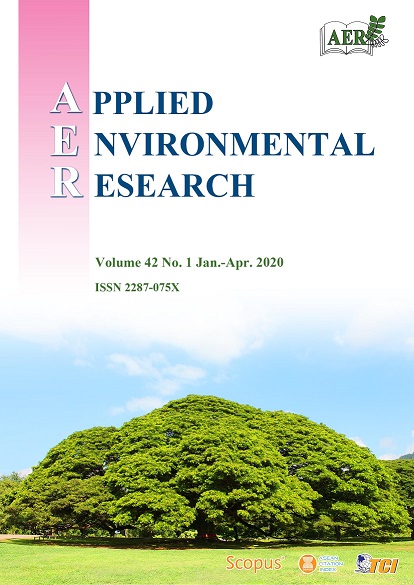Environmental Pollution of Heavy Metals in a Vietnamese Informal E-waste Processing Village
Main Article Content
Abstract
Inappropriate handlings of informal e-waste processing have increasingly become a global environmental and public health issue of concern. This study was conducted to quantify the concentrations of five heavy metals found in the environmental media at an exposed village and a reference village in Northern Vietnam. The correlations between a pair of the heavy metals found in a medium, and between a pair of the environmental media was found. The results showed that drinking water was safe for heavy metal exposure in both studied villages. However, at the exposed village, the levels of the heavy metals found in indoor soil were, in descending order, Pb (678.42 ± 846.11 mg kg-1) > Ni (148.77± 163.80 mg kg-1) > Cr (61.99 ± 42.50 mg kg-1) > As (7.62 ± 3.33 mg kg-1) > Cd (6.34 ± 12.39 mg kg-1). The levels of Pb, Cd, Cr, and Ni in indoor soil and surface dust in the exposed village were significantly higher than those in the reference village at p<0.001. The average concentrations of Pb, Cd, Cr, Ni and As in indoor soil were 3.57, 8.78, 1.90, 4.41, and 1.08 times, respectively, higher than those in outdoor soil at p<0.001. The levels of Pb and Cd found in indoor soil at the exposed village were 9.69 and 3.17 time, respectively, higher than the maximum allowable limits in Vietnam. Significant correlations between the pairs of the heavy metals in a medium and between the pair of the environmental media was found at the exposed village. This finding suggested that inappropriate activities conducted at an informal e-waste processing facility could be a major contributor to the heavy metal contaminations. This study highlighted the importance of release mitigation of a hazardous heavy metal from an informal e-waste processing facility to prevent its potential effects on human health.
Article Details

This work is licensed under a Creative Commons Attribution-NonCommercial 4.0 International License.
Published articles are under the copyright of the Applied Environmental Research effective when the article is accepted for publication thus granting Applied Environmental Research all rights for the work so that both parties may be protected from the consequences of unauthorized use. Partially or totally publication of an article elsewhere is possible only after the consent from the editors.

